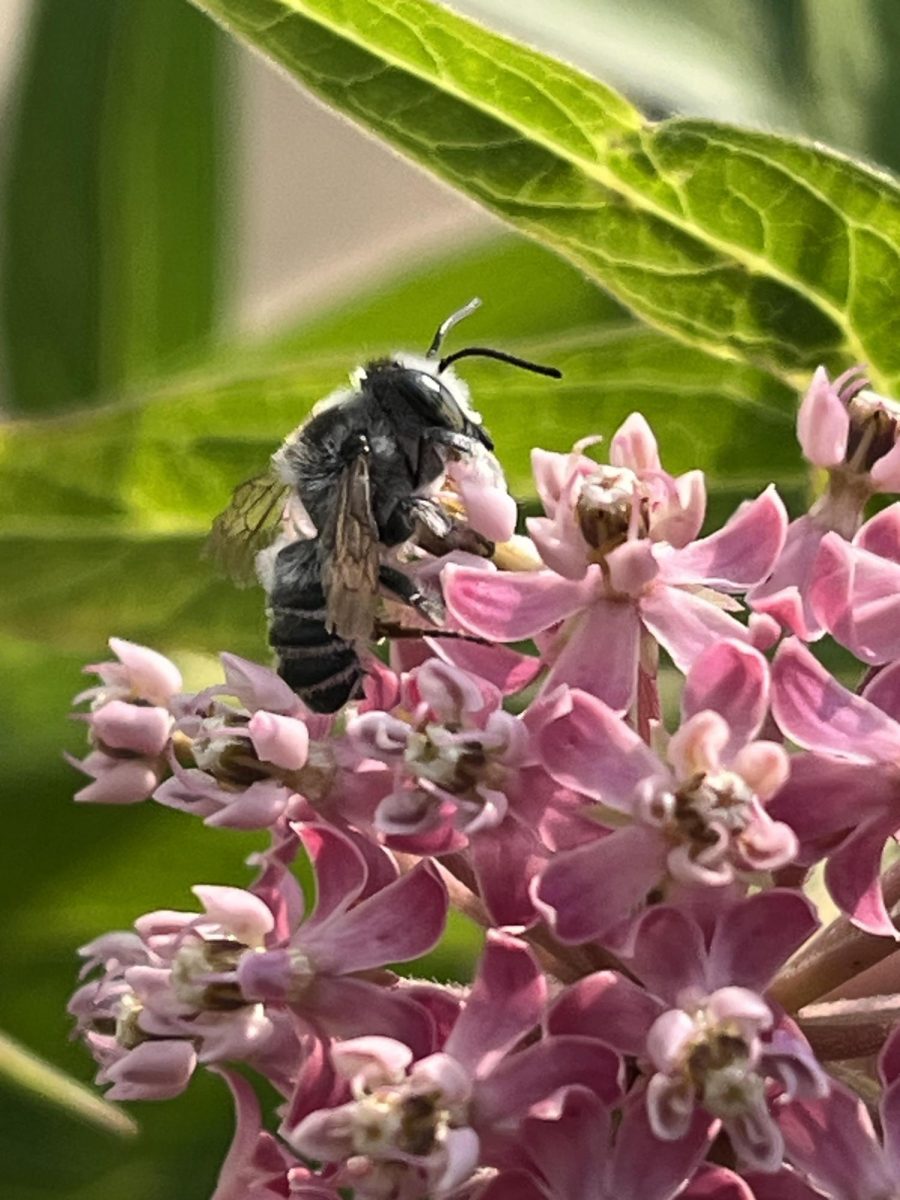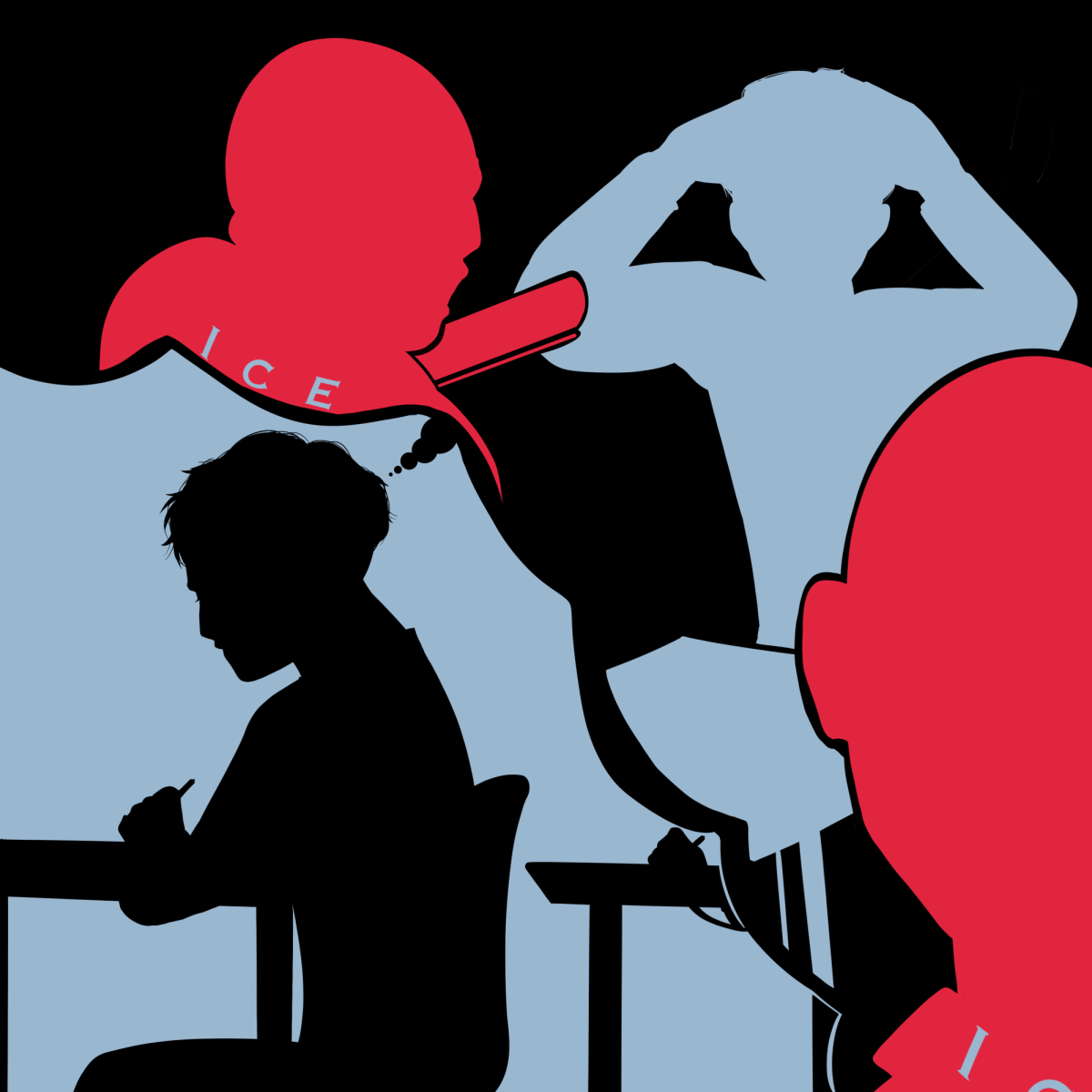When spring finally sprang in 2022, I decided to start a small pollinator garden. My family and I chopped up pieces of plywood, nailed them together and installed the soil. Meanwhile, I bought the first plants and seeds. While the first year was mildly successful, it was plagued by extreme heat and drought. The second year, however, was much more successful and, like the name suggests, attracted many pollinators.
When the word “pollinator” comes up, most people think of honeybees and bumblebees. While they are excellent pollinators, these are not the only ones by any means. Butterflies, wasps, hoverflies and many other species are also important.
Native pollinators are perhaps the most important creatures we need to keep our eyes on and have in our gardens or lawns. An estimated 80% of America’s prairies (who host most pollinators) have been lost to vast fields and urban development. Furthermore, 99% of tallgrass prairies (including Minnesota’s) are lost for the same reason. This causes a cascading effect that results in most of our native pollinators being endangered or going extinct.
“In Minnesota, we have over 2,000 insect pollinator species, 500 of which are native bees who have been on the decline over the past few years,” Columbia Heights Public Schools agriculture specialist Ms. Melissa Trent said. “Native plants are acclimated to our regional climate and support the pollinators who have adapted alongside them in our area. It’s important to plant native flora to provide a variety of floral resources and habitats to our native pollinators throughout the growing season.”
To save these insects that are the most at risk of extinction, we need to bring back at least a few pieces of the former prairie the land was used to before European colonization. The benefits of starting a pollinator garden vastly outweigh the drawbacks, even for humans and some industries one might not expect.
Firstly, let’s take a look at the actual garden itself. Native gardens are relatively easy to look after. They are low maintenance and better at withstanding drought conditions because they are native. In summer, most native plants are in full bloom, from classic daisy-like flowers to clusters of mini-flowers like delphinium and everything in between. It’s often a striking display while also attracting many beneficial pollinators.
Pollinator gardens attract many insects most people have never heard of. In the past year alone, I discovered many new insects one wouldn’t typically find. For instance, I found a hoverfly maggot that ate some annoying, invasive aphids on my milkweed and I finally came face to face with a rusty-patched bumblebee — a critically endangered bee.
These often unknown pollinators have the potential to solve major problems in the agricultural industry. Fields are often laced with pesticides that prevent pesky insects from destroying crops. Unfortunately, pesticides know no good insects and kill pollinators as well. To solve that, farmers can utilize the symbiotic relationships between the insects for pest management, especially if they plant a large plot of native prairie, all while researchers are searching for ways to explicitly target a single species, using less pesticide. This is already happening in a California citrus field where the mutual relationship between hoverflies, psyllids, wasps and ants are on full display. Overall, combining an increase in pollinators with these symbiotic relationships reduces the risk of famine and leads to higher quality and tastier food.
Recently, school districts and municipalities have realized the importance of pollinator gardens, making them take full advantage of pollinator gardens. In Columbia Heights, Mayor Amáda Márquez Simula signed the Mayor’s Monarch Pledge in 2021, which raises awareness to protect the Monarch Butterfly.
“The Mayor’s Monarch Pledge is a program run by the National Wildlife Federation that encourages cities, municipalities and communities across the United States to create habitats for monarch butterflies and other pollinators,” Márquez Simula said. “To fulfill the Mayor’s Monarch Pledge, I creat[ed] a proclamation [that] declared our city’s participation in the pledge, raised awareness about the significance of native milkweed and plants [and] provided Mayor’s Monarch Pledge yard signs to residents.”
In addition, the city is promoting “Less Mow May” to allow time for ground-dwelling insects to emerge out of hibernation. Previously, the city promoted “No Mow May” — however, homeowners found it difficult to mow after a full month of growth. Regardless, No or Less-Mow May is less effective than transforming that lawn into a meadow, but more helpful for those who have less time to do so.
Columbia Heights Public Schools received a grant from the Melinda Vaughn Pollinator Fund, which provides the district with more tools to expand its pollinator garden.
“The Melinda Vaughn Pollinator Fund… has allowed us to purchase over 100 native pollinator plants to expand our pollinator garden near the District Family Center,” Trent said. “Over 90 students had the opportunity to learn more about plants that are beneficial to pollinators and [selected] the perennial plants that volunteers from multiple elementary and high school classes will be installing in May.”
With all of the buzz (pun intended) and excitement about pollinator gardens, one may wonder, “How do I start a pollinator garden?” The first thing to do is research. Start with popular plants that generally benefit most pollinators, including milkweed, goldenrod and bee balm. A raised bed or just a small section of your lawn can help ease one into the practice. The first year may not be very showy, but every year after that there should be more flowering activity. Whether starting small or looking to expand an already-existing pollinator-friendly yard, the neighborhood ecosystem (and its tiny, integral inhabitants) will benefit.









